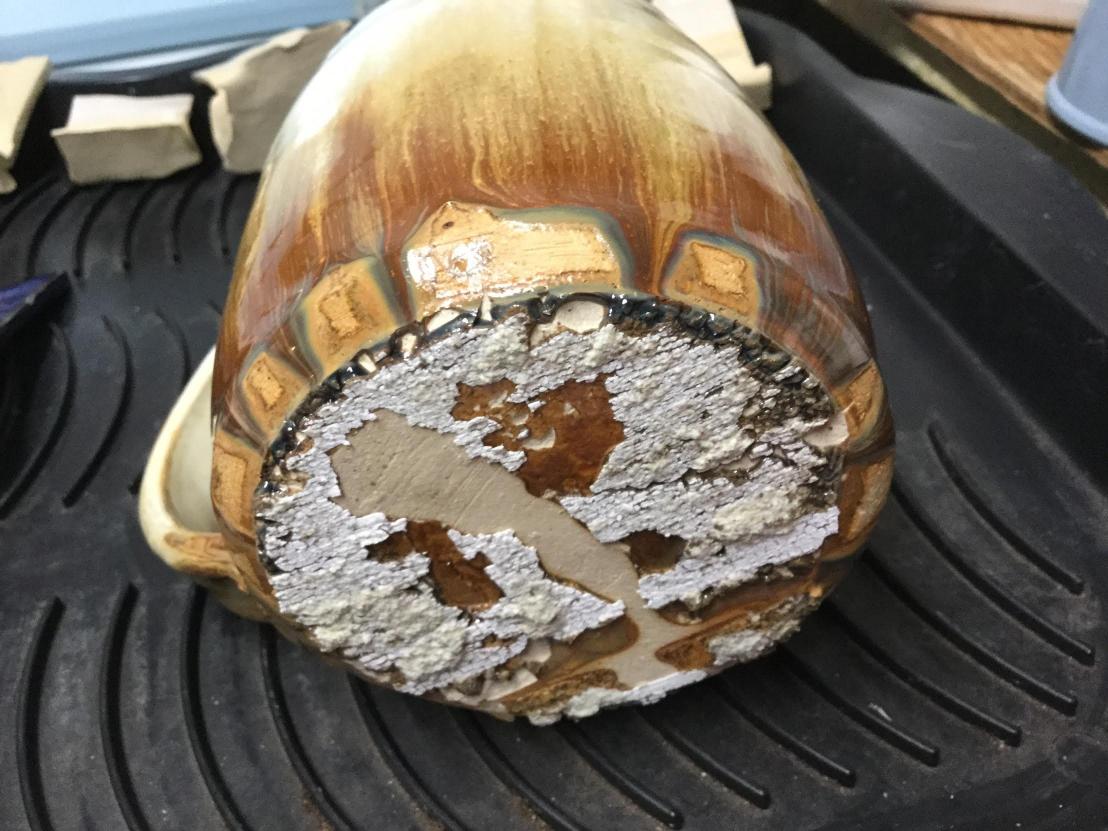An extremely runny glaze at cone 6. The runniness is manageable, it has other issues!
This recipe melts to such a fluid glass because of its high sodium and lithium content (coupled with low insight-live.com/material/1245">silica levels). Reactive glazes like this produce interesting visuals but these come at the obvious cost of being runny like this. But this problem can be managed with glaze technique, a catch glaze on the outside and a liner glaze (to prevent the formation of a lake on the inside bottom (which leads to glaze compression problems). A bigger problem is that drippy glazes like this often calculate to an extremely high thermal expansion. That means food surfaces will craze badly. Another issue that underscores the value of using a liner glaze: Low silica often contributes to leaching of the lithium and any heavy metals present in the colorants.
Pages that reference this post in the Digitalfire Reference Library:
Glaze Compression, Leaching, Fluid Melt Glazes, Runny Ceramic Glazes

This post is one of thousands found in the Digitalfire Reference Database. Most are part of a timeline maintained by Tony Hansen. You can search that timeline on the home page of digitalfire.com.
